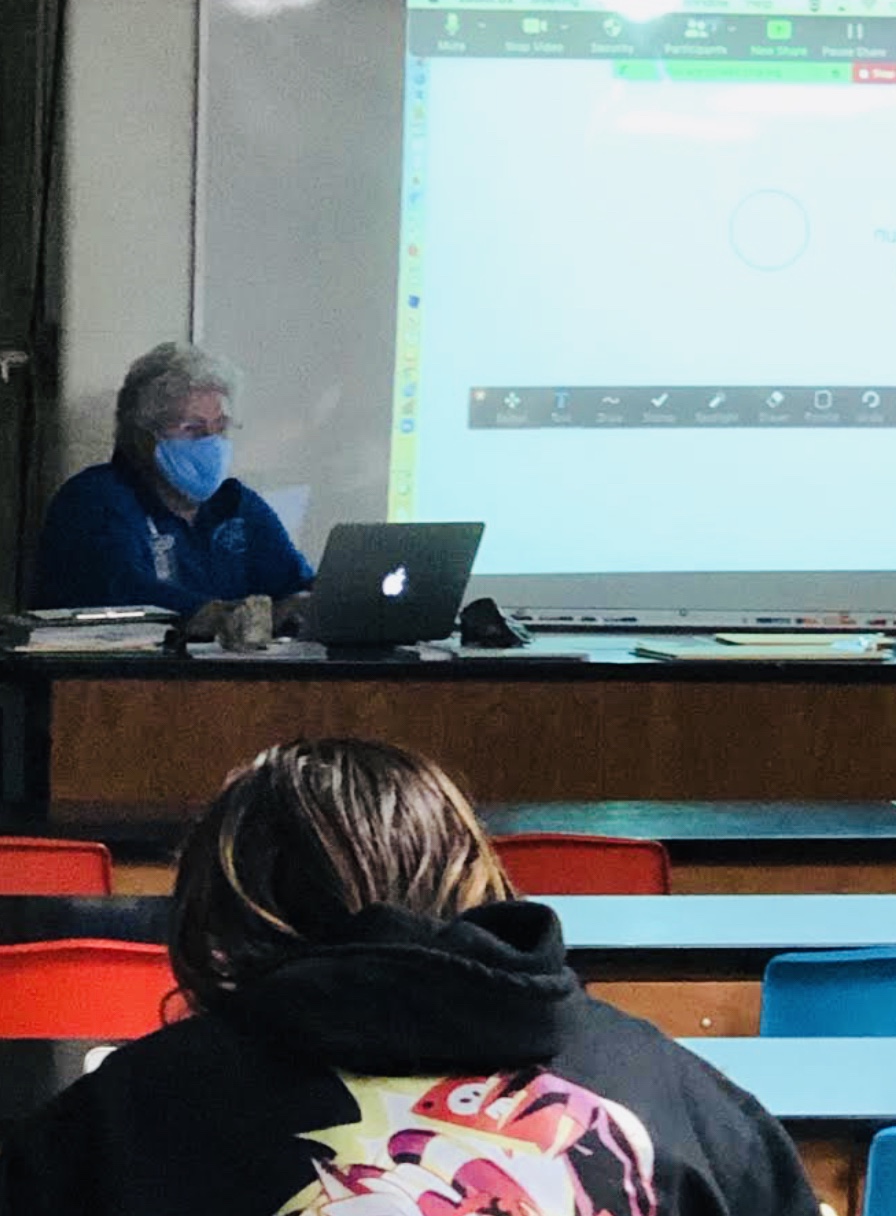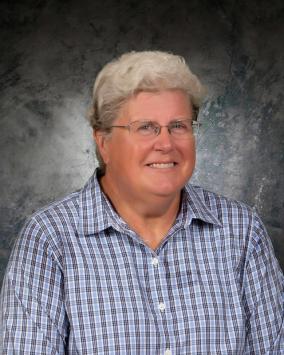Beyond the Periodic Table: Teacher Feature with Alliance's Laura Schroer
Beyond the Periodic Table: Teacher Feature with Alliance's Laura Schroer
By Tyler Dahlgren
For 25 years, Laura Schroer has taught science in Alliance, Nebraska, a Panhandle town of about 8,000 people plotted in the vicinity of marvelous topography and breathtaking landscapes.
“We have wonderful laboratories just outside of the door,” said Schroer, who throughout her years has instructed a wide range of high school science courses, from earth science to biology. “We can go to the Scotts Bluff Monument or we can go to Chadron State Park and show the kids that they’re living in a science laboratory.”
These days, Schroer teaches chemistry and physics and is the Science Department Chair at Alliance, a school that employed seven science teachers when Schroer was hired in 1995. That number may now be down to four, but Curriculum Director Rita Moravek calls Schroer and her three fellow science teachers a dynamic group of educators that are making a difference in the lives of students.
“Of course, my teachers don’t think they do anything special, but they do,” Moravek said of Schroer and science teachers Joshua Allison, Sydnie Jeffrey and Sofia Fox. “They gather data, analyze it, and adjust what they do in their classrooms to maximize student growth. They are masters at what they do and have taken in a couple of new teachers to work with them and are mentoring them well. I think they are dynamite.”
It sounds simple, Moravek said, but in reality, what the Alliance Science Department has been able to do is anything but. About a decade ago, administration moved departments in the school closer together.
“We’re all in the same hallway,” said Schroer. “We have access to one another’s materials if we need them, and there’s a great deal of comradery between us. We don’t teach the same classes, but if one of us has a question, it’s very easy to go across the hall and ask.”
That administrative decision, Schroer explained, has made the lives of teachers across the building easier. The science teachers share planning time together, and collaboration is continuously increasing. During the pandemic, those relationships have been critical.
“Everyone is working very hard to do the best they can for kids,” said Schroer, who is on the Continuous Improvement Committee. “Our administration has always valued our opinions in terms of what we teach, which is extremely helpful.”
Schroer guesses that she pursued a career in education after graduating from Emporia State University because of the influence several “very good” teachers had on her while she was a high-schooler at Luckey High School in Manhattan, KS. She taught for a dozen years in Kansas before making the move across the Great Plains in 1995.
Western Nebraska has been home ever since.
“Our kids come from a variety of backgrounds, and I would say Alliance is working class,” said Schroer. “The Railroad is probably our largest employer, and we have a very nice, large regional hospital. As far as science is concerned, both the Railroad and especially the hospital have been helpful with cross-curricular activities.”
Box Butte General Hospital started the Health Professions Club for Alliance, Hemingford and Hay Springs students about a decade ago, and watching her students go through the program and into careers in healthcare has been an enormously rewarding part of Schroer’s career.
“The number of students that I’ve had in class that have gone on to be pharmacists, medical doctors, nurses, and lab techs, I’m proud of that,” she said. “I go up to my doctor or visit the hospital to have blood drawn and I’ll see five or six former students. They’re staying in Alliance, which is nice.”
Much has changed over the last quarter of a century, Schroer said. Especially technology. She admits that she doesn’t have as much in common with today’s students. Schroer couldn’t tell you what TikTok is and doesn’t closely follow Twitter or Facebook. But that doesn’t mean she’s lost the ability to open her students’ eyes to their own potential. To connect students with the world of possibilities that awaits them.
“There’s an assignment I started doing about 20 years ago where I asked them to read a non-fiction science book,” Schroer said. “Kids these days, they only read what they’re supposed to read, and I was the same in high school.”
It wasn’t until college that Schroer really started diving into novels and works of non-fiction. The non-fiction books in particular, she soon realized, could be used to boost a student’s drive. Inspiration as a little extra splash of motivation, you could say.
“There’s the personality of scientists that come through in those books, and some of the kids don’t think they’re smart enough to be a scientist," Shroer said. "If they read these biographies, however, it really opens their eyes to possibilities. So relating those stories from nonfiction science writing, and repeating some of the small experiments that these now famous people did when they were in school, that’s been fun.”
And if Schroer still needs to break through? Well, there’s always old reliable to light the fire (pardon the pun) that stokes a student’s interest.
“Pretty much anything that involves fire or an explosion gets their attention,” she laughs.
A favorite experiment among her students is the flame test, in which they burn different elements to discover which colors of light are emitted due to the atomic structures of the element. Students then mix elements to achieve different colors, just as they would mix paint.
“They all know yellow plus blue is green, but what if we burn sodium and copper together, what color will that produce?” Schroer asks. “They’ve always enjoyed the flame test. When they’re startled by a reaction, they act like it’s magic.”
No, she explains, it's science. And Laura Schoer is a science teacher who hopes her lessons extend beyond the periodic table.
“I want my students to understand that they’re not alone, that they’re part of a community.”



